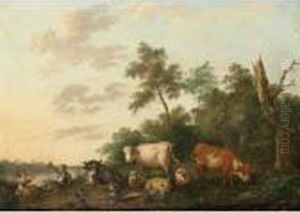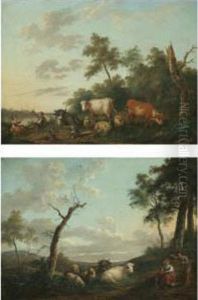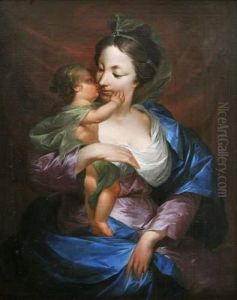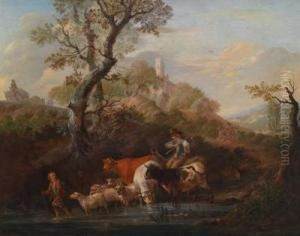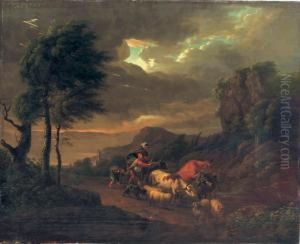Franciscus Xaverius Xavery Paintings
Franciscus Xaverius Xavery was a Dutch sculptor of the 18th century, who was part of the notable Xavery family of artists that played a significant role in the artistic scene of the Netherlands during that era. Born in The Hague, Xavery was a member of a family with a rich artistic tradition. His relatives, including Jan Baptist Xavery, were well-known sculptors and contributed to his early education and inspiration in the arts.
Xavery's work was characterized by the Rococo style, which was prevalent in Europe during the mid-18th century. This style was known for its elaborate ornamentation, intricate details, and asymmetric designs, which were a departure from the more structured and geometric patterns of the preceding Baroque period. Xavery's sculptures often featured themes from mythology and allegory, which were popular subjects in Rococo art.
Despite the prominence of his family in the Dutch art world, specific details about Franciscus Xaverius Xavery's life and career are not as well-documented as some of his contemporaries. However, it is known that his contributions to Dutch sculpture were appreciated in his time, and his works were part of the artistic developments that bridged the gap between the Baroque and Neoclassical styles.
Xavery's legacy includes not only his sculptures but also his influence on Dutch artistic heritage. His artistry helped to maintain the high standards of Dutch sculpture during a period of transition in European art. Unfortunately, as with many artists of the past, some of his works may have been lost or remain unidentified, and his fame has been somewhat overshadowed by other figures of the era.
Franciscus Xaverius Xavery passed away in 1797. While he may not be as widely recognized as some of his peers, his contributions to the art world, particularly within the Netherlands, continue to be acknowledged by art historians and enthusiasts of the Rococo style.


